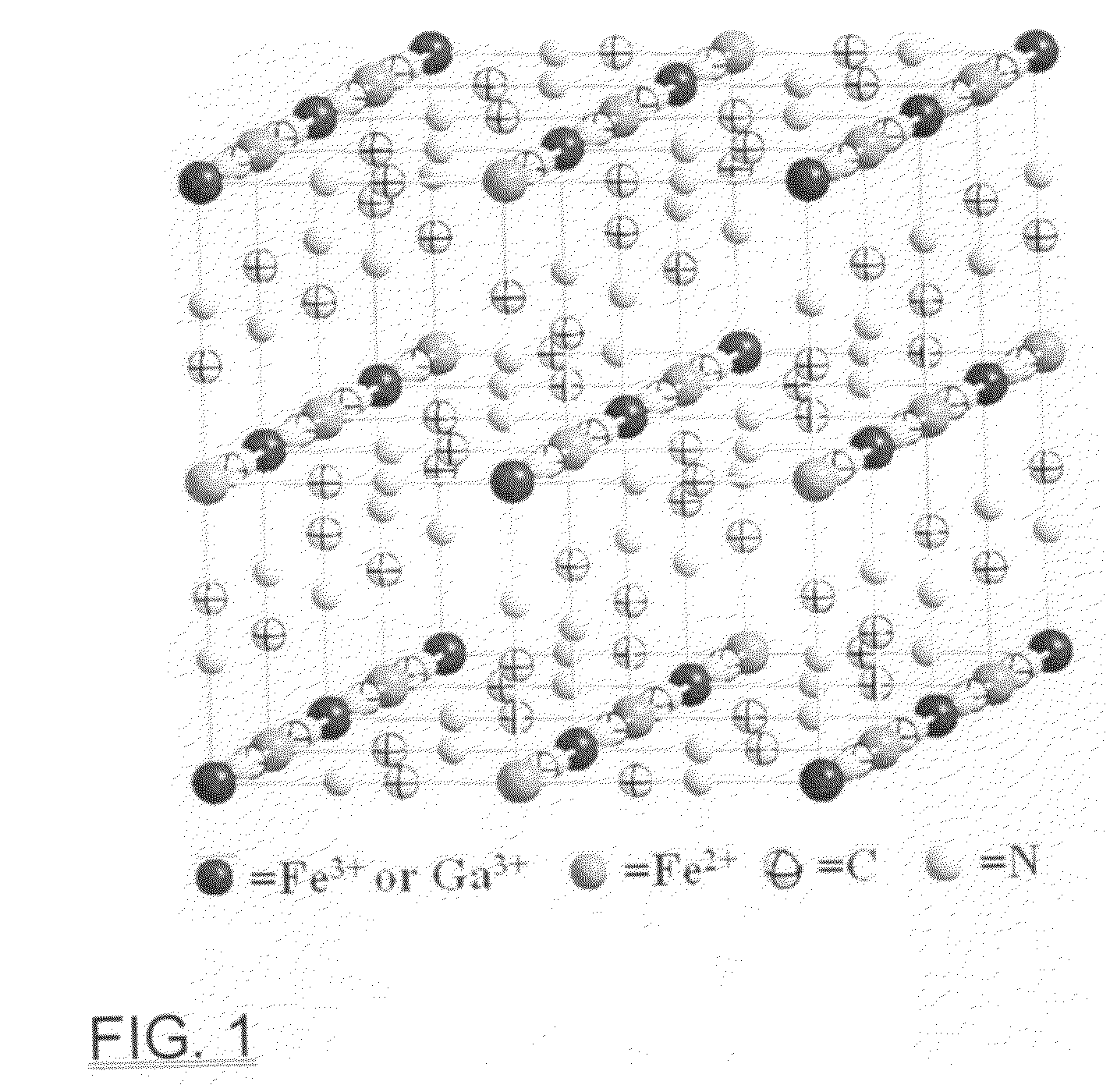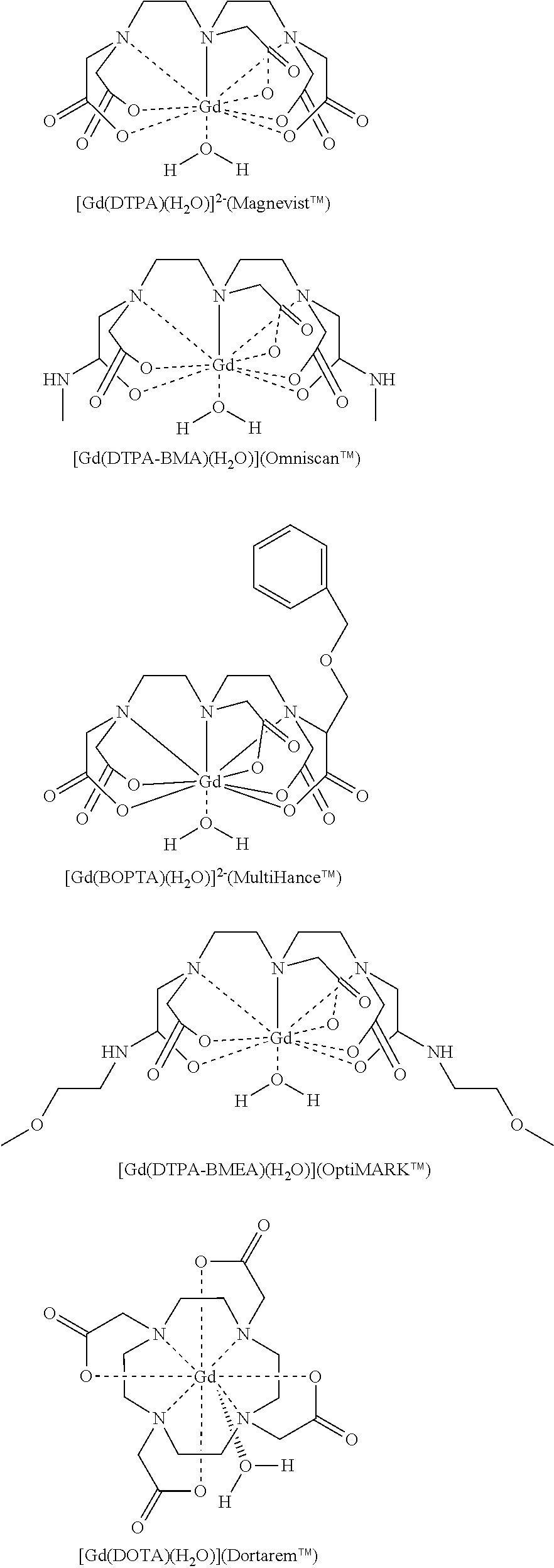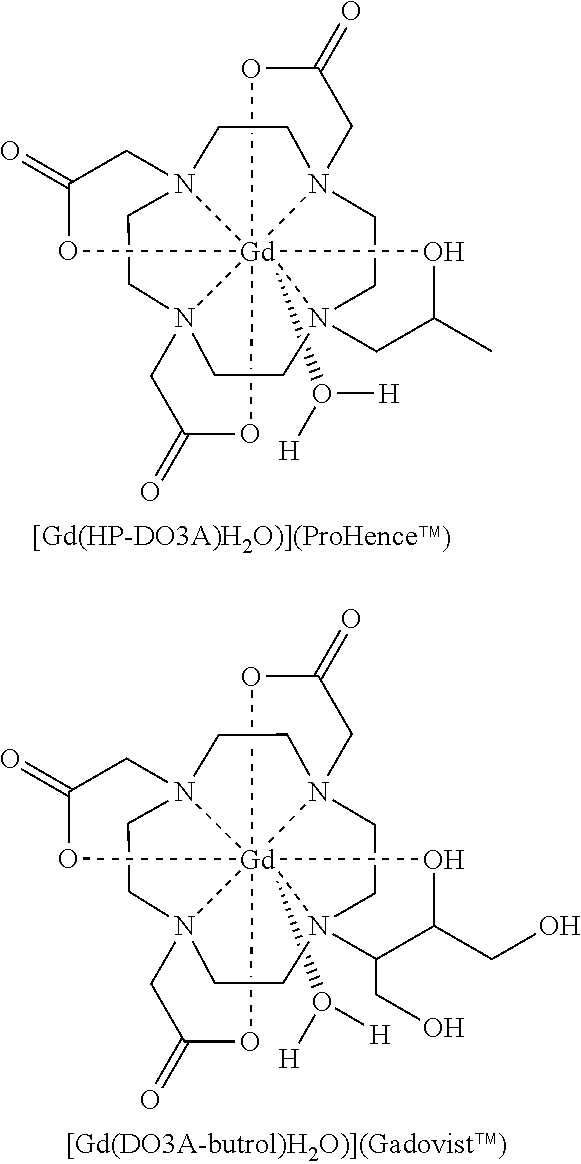Gadolinium containing prussian blue nanoparticles as nontoxic MRI contrast agents having high relaxivity
a mri contrast agent and non-toxic technology, applied in the field of prussian blue nanoparticles as non-toxic mri contrast agents having high relaxivity, can solve the problems of low relaxivity of these agents in high magnetic fields, toxicity of free gdsup>3+/sup> ions, and disrupt the normal casup>, so as to reduce the relaxation times t1 and t2 of water, low leach rate, and low solub
- Summary
- Abstract
- Description
- Claims
- Application Information
AI Technical Summary
Benefits of technology
Problems solved by technology
Method used
Image
Examples
example one
[0044]As an example, citrate-coated Gd3+-incorporated Prussian blue nanoparticles were prepared by slowly adding 20 mL of 1.0 mM solution with the mole fraction ratio of [FeCl3] / [GdCl3]=9:1 containing 0.5 mmol of citric acid into an equimolar K4[Fe(CN)6] solution containing 0.5 mmol of citric acid under rigorous stirring at room temperature for three minutes. The product was isolated by centrifugation and washing with a water-acetone mixture (30:70 v / v) three times. The X-ray powder diffraction studies showed that the XRD pattern can be indexed into the cubic face-centered Prussian blue phase (space group Fm3m). Transmission electronic microscopy (TEM) analysis revealed that the nanoparticles are well-formed square platelets and narrowly distributed with an average diameter of ca. 13±3 nm. Dynamic light scattering (DLS) measurements showed the hydrodynamic diameter of the PB nanoparticles to be 20 nm. Elemental analysis confirmed the ratio of all Fe / Gd to be close to 19:1.
example two
[0045]Similar Gd3+-incorporated Prussian blue nanoparticles were also prepared by mixing 20 mL of 1.0 mM solution with the mole fraction ratio of [FeCl2] / [GdCl3]=5:5 containing 0.5 mmol of citric acid into an equimolar K3[Fe(CN)6] solution containing 0.5 mmol of citric acid under rigorous stirring at room temperature for three minutes. The product, after isolated by centrifugation and washing with a water-acetone mixture (30:70 v / v) three times, showed virtually identical characteristics as that prepared by the above method, except that the ratio of all Fe / Gd to be close to 3:1.
example three
[0046]Yet another method for the preparation of Gd3+-incorporated Prussian blue nanoparticles required the use of 20 mL of 1.0 mM solution with the mole fraction ratio of [FeCl3] / [GdCl3]=6:4 containing 0.5 mmol of citric acid , and another solution of an equimolar K3[Fe(CN)6] solution containing 0.5 mmol of citric acid. The two solutions were mixed in the dark, and exposed to sunlight for 30 minutes. The Gd3+-incorporated nanoparticles were formed slowly along with a gradual change of solution color from light green to deep blue in 5-10 minutes. The product was isolated by centrifugation and washing with a water-acetone mixture (30:70 v / v) three times, and showed the ratio of all Fe / Gd to be close to 4:1.
[0047]The Gd3+-PB contrast agents of the present invention are very versatile and can be utilized in numerous applications such as molecular or cellular probes for spectroscopy and microscopy, and contrast agents for various imaging modalities apparatuses.
[0048]The materials and met...
PUM
| Property | Measurement | Unit |
|---|---|---|
| particle size | aaaaa | aaaaa |
| particle size | aaaaa | aaaaa |
| particle size | aaaaa | aaaaa |
Abstract
Description
Claims
Application Information
 Login to View More
Login to View More - R&D
- Intellectual Property
- Life Sciences
- Materials
- Tech Scout
- Unparalleled Data Quality
- Higher Quality Content
- 60% Fewer Hallucinations
Browse by: Latest US Patents, China's latest patents, Technical Efficacy Thesaurus, Application Domain, Technology Topic, Popular Technical Reports.
© 2025 PatSnap. All rights reserved.Legal|Privacy policy|Modern Slavery Act Transparency Statement|Sitemap|About US| Contact US: help@patsnap.com



